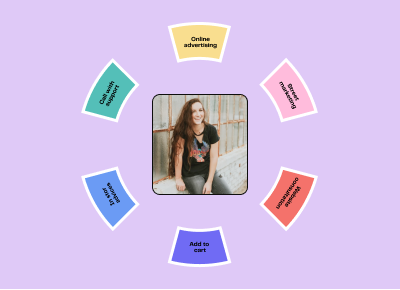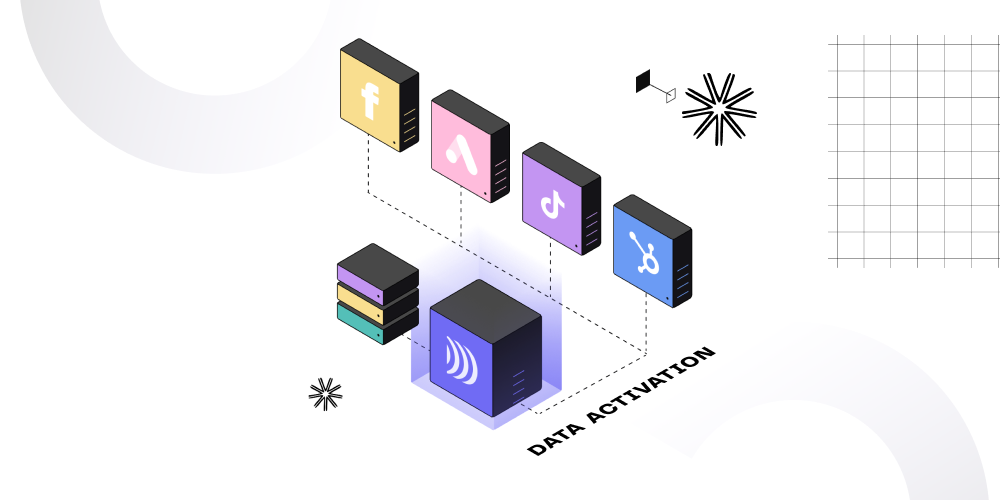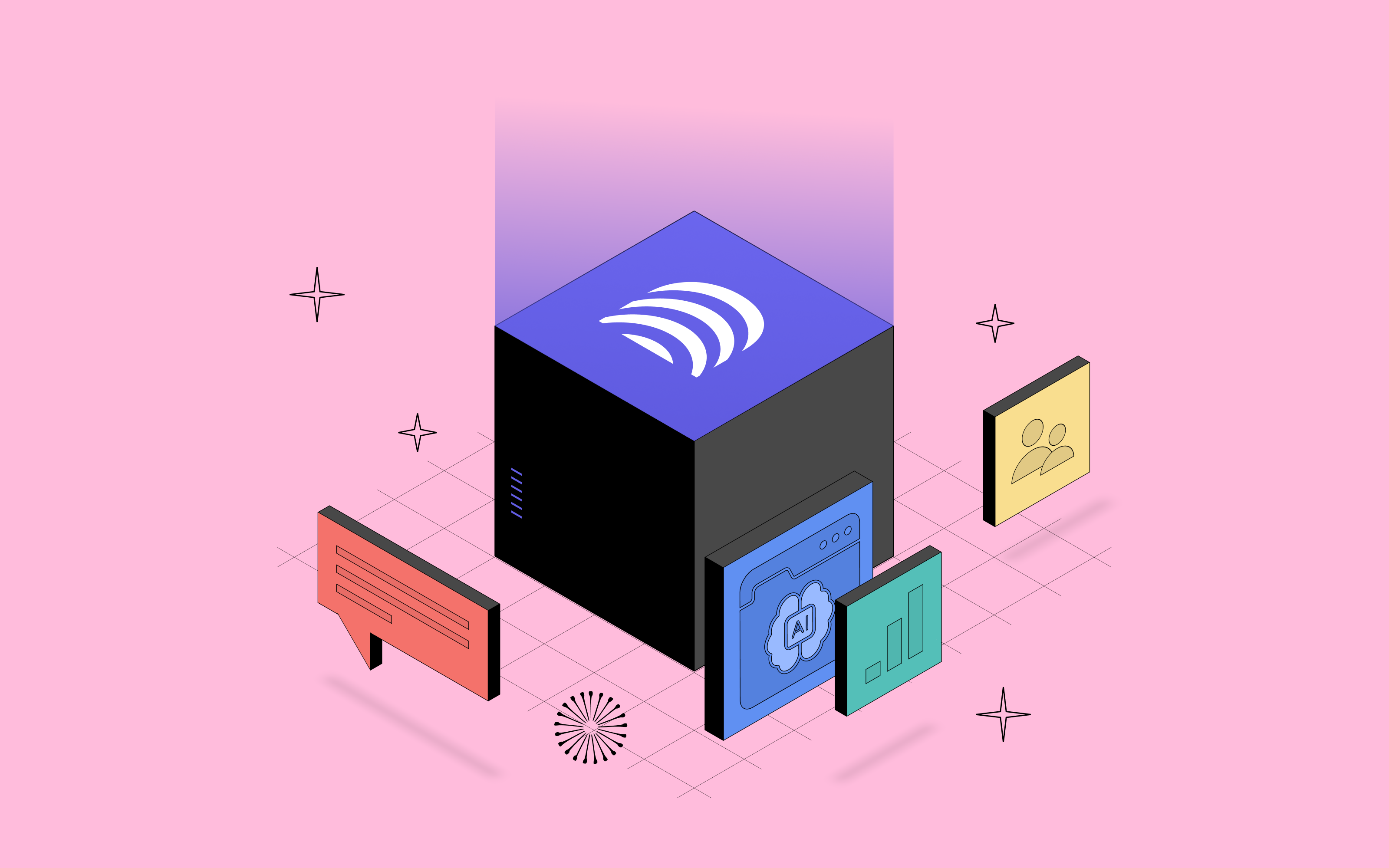
How to implement an omnichannel strategy?
4min • Last updated on Mar 5, 2025

Nils Hasselmark
Product Manager
Introduction
On March 12, 1989, Tim Berners-Lee established the World Wide Web to eliminate geographical barriers in exchanging information. Who could have predicted at that time that this single act would mark the start of the deepest transformation the business world ever knew, and that it would fundamentally alter the way companies and consumers interact with each other?
That’s right. Almost no one. Due to a lack of understanding and resistance to change, most companies took years, even decades, before embracing digital business models.
25 years later, this technological inertia has not changed in any way. Most companies still struggle to adopt and leverage the latest technologies, primarily due to a lack of understanding of how technology can unlock marketing opportunities.
So, let's take a moment in this article to review what data activation can do.
How digitalization unlocks the move from Product-Centric to Customer-Centric Marketing
Thanks to the internet, consumers now often possess as much knowledge, if not more, about a company's product portfolio than their own sales representatives. Such an easy access of information has placed companies in a state of hyper-competition, and destabilizes most industries' barriers to entry.
As a response, marketers have no choice but to establish a robust digital presence to reach their consumers, who now initiate their research online rather than in physical stores.
👉🏼 This is where digital marketing comes in.
Digital marketing revolutionizes the traditional marketing operations by considering the customer journey as beginning at a much earlier stage than the first in-store visits. With the emergence of the digital, many new communication channels have appeared, offering a demultiplication of new touch points to target potential consumers at a very early stage. In a world where people spend on average seven hours online, this is a revolution: companies can interact with their customers without interruption.
Being able to talk to your customers all the time is great, but you have to do it properly! Digital marketing opportunities are not just about targeting users in more varied places. Digital marketing has emerged as the main support to redefine and personalize the relationships between consumers and vendors.
This approach is called customer-centric marketing. In the digital era, it is not a product that is promoted anymore, but a personalized relationship between the brand and the consumer. And omnichannel marketing is the Holy Grail when it comes to implementing customer-centric marketing.
The Emergence of a new standard: Omnichannel Marketing
The majority of businesses today operate a traditional multichannel strategy. Multichannel marketing refers to the use of a multitude of different communication channels to interact with its customer base.
For instance, a retail business might have an e-commerce website, physical stores, pages on different social media platforms from where it can launch acquisition campaigns, and so on.
In multichannel marketing, the customer experience remains limited to a single communication channel. Someone may browse products on the company’s website, make an in-store purchase, then contact customer support via phone or email. All of these interactions are done separately.
But in today’s world, customers expect a single and unified experience. It is in such a context that omnichannel marketing appeared. Omnichannel marketing aims to unify all the different communication channels to create a single customer experience. The channels are interconnected, and information is exchanged seamlessly.
Here's an example to illustrate the difference.
Multichannel customer journey:
John sees an advertisement for a new smartphone on a billboard while driving.
Interested, he visits the company's website on his laptop to learn more about the product.
After researching, he decides to visit a physical store to see the phone in person and ask questions.
At the store, John discovers that the phone he wants is out of stock.
Disappointed, he contacts customer support through the company's website to inquire about availability and alternatives.
He receives an email response the next day, providing some options for purchasing the phone online.
John finally makes the purchase online using his smartphone.
Omnichannel customer journey:
Sarah sees an advertisement for a new smartphone on a billboard while walking on the streets.
She uses her smartphone to scan a QR code on the billboard, which takes her directly to the product page within the company's mobile app.
Sarah explores the features and specifications of the phone, adds it to her cart, and decides to think about it before making a purchase.
Later, at home, Sarah accesses the company's website on her laptop to compare prices and read customer reviews.
When she opens the website, the items in her cart from the mobile app are automatically synchronized.
Sarah decides to visit a physical store to see the phone in person and make the final decision.
At the store, the sales representative, with access to Sarah's cart history, provides personalized recommendations and offers a special discount for completing the purchase in-store.
Sarah decides to take advantage of the offer, purchases the phone at the store, and the transaction is recorded in her account.
She receives an email with the receipt and a follow-up message thanking her for the purchase, providing links to customer support and the company's social media channels for any further assistance.
In the multichannel example, the customer interacts with various channels independently, and there may be gaps or inconsistencies in the overall experience. In the omnichannel example, the customer journey is seamlessly connected, allowing for personalized and contextual interactions across channels, resulting in a more integrated and satisfying experience.
How to implement an omnichannel strategy?
The transition involves aligning marketing, sales, supply chain, and customer service functions across all channels to deliver a cohesive experience. This can be a major challenge: the transition may require significant investment in technology infrastructure, data management systems, and staff training to ensure a seamless transition.
Implementing an omnichannel strategy effectively involves seamlessly integrating multiple channels (like online, in-store, and mobile) to provide a cohesive customer experience. Here are some tools you may need in your Modern Data Stack to implement your strategy:
A single source of truth (SSOT): In order to offer a unified experience, it is essential that all tools have the same level of customer knowledge. To achieve this, it is essential to centralise all your data in a single source of truth, which can then be used to feed all the tools described below.
Customer Data Platform (CDP): Centralizes customer data from multiple sources, providing a single customer view. This helps in understanding customer behaviors and preferences across different channels to efficiently activate your customer data. 💡 If you already have a data warehouse, consider Composable CDP not to duplicate your single source of truth.
Analytics and Business Intelligence Tools: These tools help in analyzing customer interactions and sales data and making data-driven decisions to optimize customer journeys.
Marketing Automation Tools and CRM: The main objective is to automate marketing processes, personalize customer interactions, and ensure consistent messaging across channels (SMS, push, emails, etc.).
Inventory Management System: Integrates with other channels to provide real-time inventory visibility, essential for managing stock across different sales points.
E-commerce Platforms: Such as Shopify or Magento, which integrate well with physical store systems and online marketplaces, ensuring a seamless shopping experience.
It’s essential to implement these tools in a way that they communicate and share data effectively, ensuring a unified approach to your omnichannel strategy.
Conclusion
Omnichannel marketing takes a customer-centric approach by seamlessly integrating all channels to provide a unified and consistent experience. It is becoming the new standard when it comes to maximizing customer experience, loyalty, brand and acquisition.
Businesses are only starting to recognize the need to adapt to the changing consumer landscape and embracing omnichannel strategies. Fortunately, the apparition of the modern data stack solutions is starting to democratize data leveraging in the industry.
If you want to learn how DinMo can help you implement an omnichannel strategy, contact us!
















